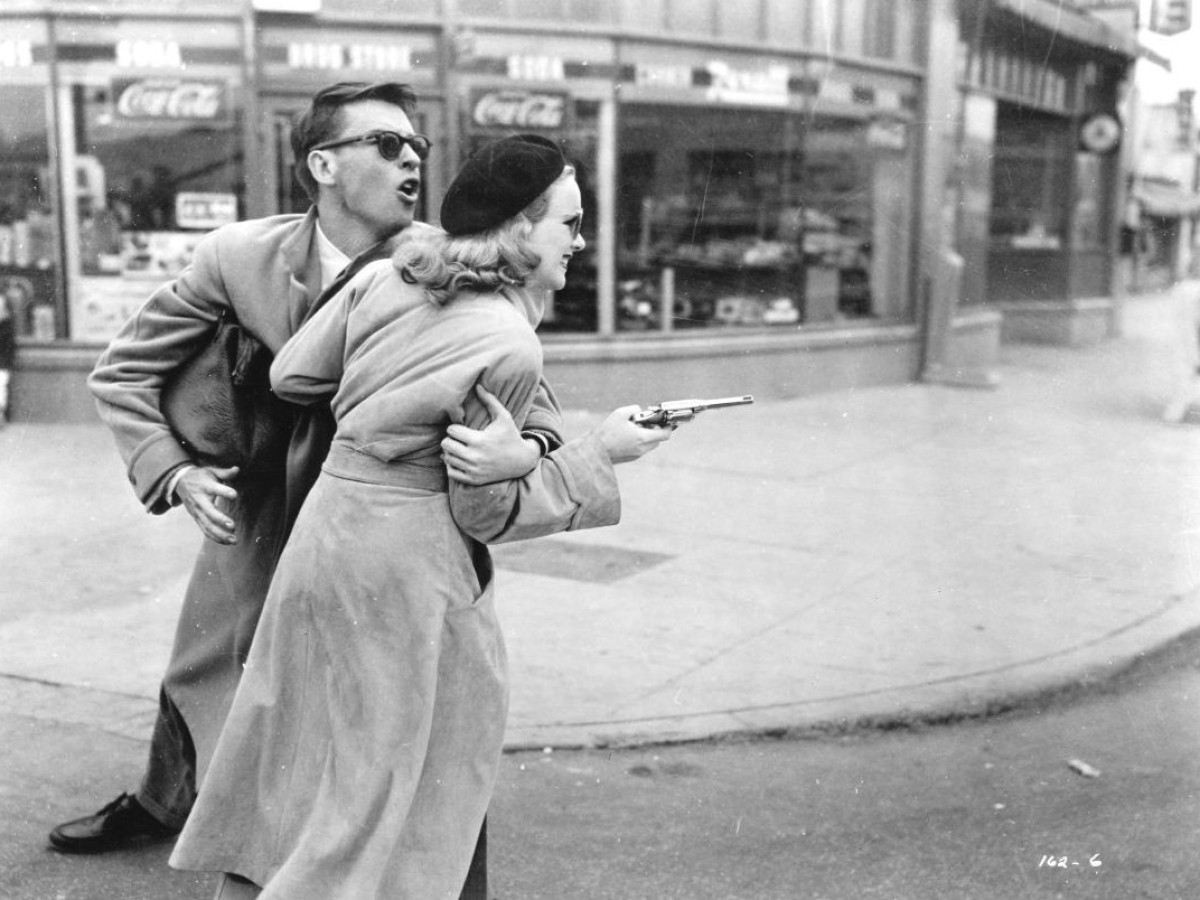You Can't Win
Film noir Part 2: 1948-2001
April 1 to 30, 2005
In April, the Film Museum presents the second part of its comprehensive Retrospective on film noir. The focus is now on the genre's heyday in the late 1940s and 50s, as well as the various extensions and offshoots which the "Concept of Noir" has produced right up to contemporary cinema. The series looks at film noir as a history of ideas; it is energized by a critique of optimism and capitalism which would be unthinkable without the heritage of Modernism.
The last wave of film noir in 1950s Hollywood is baroque in style, full of psychotic characters and strongly politicized. This is evidenced not only in the classics by Orson Welles (Touch of Evil), Fritz Lang (The Big Heat), Billy Wilder (Sunset Boulevard), Robert Aldrich (Kiss Me Deadly) and Alexander Mackendrick (The Sweet Smell of Success), but also in the lesser known, outstanding low-budget productions of Joseph H. Lewis (The Big Combo) and Cy Endfield. The latter, a victim of the McCarthy blacklist, is a true rediscovery. He constitutes a link to the "leftist crime films" by persecuted directors such as Jules Dassin, Robert Rossen, John Berry and Abraham Polonsky, who all left an indelible mark on film noir.
The same period also saw European film noir at its peak. First of all there were The Third Man and Yves Allégret's unjustly neglected masterpieces such as Une si jolie petite plage; in the 1950s, German films by the re-emigrees Peter Lorre and John Brahm followed. Both of their works – Der Verlorene (The Lost One) and Die goldene Pest (The Golden Plague) – met with disapproval at the time, as did Helmut Käutner's related project Schwarzer Kies (Black Gravel) from 1961. They were too noir for the German (and Austrian) “reconstruction mood” of the post-War era.
Later wars are the focal point for the major post-noir films in Hollywood: the trauma of Vietnam in films of the 1970s (Taxi Driver and Night Moves), and the Korean War and the Cold War in John Frankenheimer's political thriller The Manchurian Candidate (1962). At the same time, these films tell of a renewed cross-pollination between European and American cinema, which was initiated by the Nouvelle Vague and its faible for grim B-movies. One can detect a transatlantic exchange of inspiration, leading from Francois Truffaut's Tirez sur le pianiste (1960) to Jim McBride's decidedly underrated Godard remake Breathless (1983) and to the films of David Lynch. On the road in between, we encounter the hypermodern genre dissection of Point Blank; existentialism in Europe stemming from American myths (Jean-Pierre Melville, Rainer Werner Fassbinder, Wim Wenders and Alain Corneau's definitive Jim Thompson adaptation Série Noire); as well as the grafting of noir onto the terrain of science fiction, such as in films by Chris Marker and Ridley Scott.
The aesthetic of Scott's Blade Runner became the most influential source for the “Neo-noir” label which has seen inflationary growth in the past 25 years. The Film Museum's show confronts this fashion with a number of more substantial efforts: feminist re-readings (by Sally Potter and Bette Gordon); a rare example of "black noir" (Carl Franklin's Devil in a Blue Dress starring Denzel Washington investigates, shortly after the Rodney King affair, the racial tensions in the Los Angeles of 1948); and a malicious view of the neoliberal present in Europe via Laurent Cantet's L'Emploi du temps (2001), which closes the circle that started out in the late 19th Century with Zola's naturalism: Noir is also a cultural expression of bourgeois fears and anxieties. All the illusions on which a “successful” business and private life are based can be exposed in a matter of seconds.
Five lectures, organized by the Film Museum and SYNEMA, will shed light on the noir topic from unusual perspectives. The lecturers are Thom Andersen (Los Angeles), Elisabeth Bronfen (Zurich), Monika Faber (Vienna), Lutz Koepnick (St. Louis) and Hans Scheugl (Vienna).
